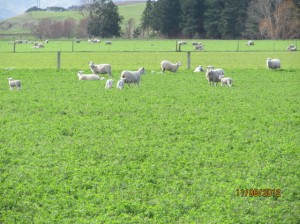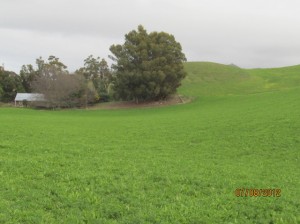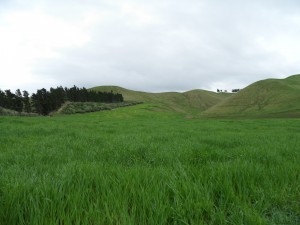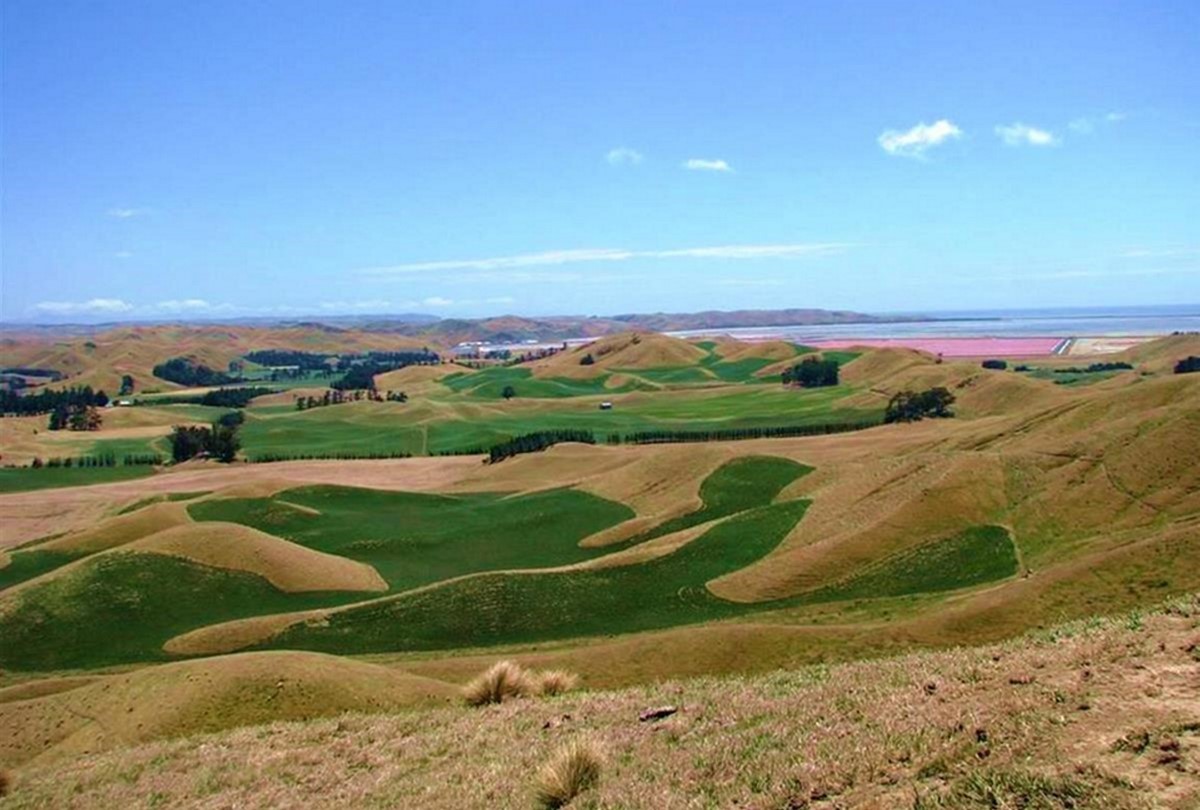Doug and Fraser Avery have kindly agreed to let us visit their property on a regular basis to report on what is happening on Bonavaree throughout the farming calendar. Initially Doug has selected three paddocks for us to use in this blog, but flexibility is key to farming successfully in a dryland environment, and so to is this blogging process, so we may report on other interesting activities throughout the year… watch this space! Anything that we think is useful to dryland farmers will be reported here with commentary captured and reported from Doug and Fraser Avery.
The 3 paddocks selected are as follows:
 1. Jeffries Front Flat: this paddock is a pure stand of Torlesse Lucerne. It was sown in 2011, and is 3.2 ha. It has great shelter (mature Macrocarpa and Eucalypts) on the southern and eastern boundaries, with Grassmere Rd skirting the Eastern side. It is a paddock which performs well, and has been used within a large lucerne based grazing system successfully since establishment.
1. Jeffries Front Flat: this paddock is a pure stand of Torlesse Lucerne. It was sown in 2011, and is 3.2 ha. It has great shelter (mature Macrocarpa and Eucalypts) on the southern and eastern boundaries, with Grassmere Rd skirting the Eastern side. It is a paddock which performs well, and has been used within a large lucerne based grazing system successfully since establishment.
 2. Glen Erin House Paddock: this paddock is a Bonavaree mix (Lucerne, Prairie Grass, and Plantain). The paddock is relatively young, only sown in Autumn 2011, but is already proving itself to be a top performer! The Bonavaree mix really suits the Avery’s system (please have a look at Fraser’s presentation at the recent Dryland Legume Workshop held in Blenheim, which shows the specifics of this paddock mix). This paddock is 6 ha, and is again a paddock with great shelter (native and exotic plantings), as well as having shelter from the hills. This mixed sward is such a success the Avery’s have plans to sow another 50 ha of it, increasing the total grazed area of the Bonavaree mix to 130 ha.
2. Glen Erin House Paddock: this paddock is a Bonavaree mix (Lucerne, Prairie Grass, and Plantain). The paddock is relatively young, only sown in Autumn 2011, but is already proving itself to be a top performer! The Bonavaree mix really suits the Avery’s system (please have a look at Fraser’s presentation at the recent Dryland Legume Workshop held in Blenheim, which shows the specifics of this paddock mix). This paddock is 6 ha, and is again a paddock with great shelter (native and exotic plantings), as well as having shelter from the hills. This mixed sward is such a success the Avery’s have plans to sow another 50 ha of it, increasing the total grazed area of the Bonavaree mix to 130 ha.
 3. North Face: This paddock is currently sown in Omaka Barley, but will be established as a Lucerne, prairie, plantain paddock in the spring. We will follow this paddock through and document the renovation process. Omaka Barley is commonly used at Bonavaree as it is a great performer in dryland Marlborough, and forms a great break crop before establishing lucerne, or lucerne mixed paddocks. North Face is 2.9ha, and was sown in October 2011.
3. North Face: This paddock is currently sown in Omaka Barley, but will be established as a Lucerne, prairie, plantain paddock in the spring. We will follow this paddock through and document the renovation process. Omaka Barley is commonly used at Bonavaree as it is a great performer in dryland Marlborough, and forms a great break crop before establishing lucerne, or lucerne mixed paddocks. North Face is 2.9ha, and was sown in October 2011.
Our blog will be a mixture of photos, video, and commentary from Doug and Fraser. Please check back regularly, or subscribe to ensure you are kept up to date with regular blog updates from Bonavaree.

Doug & Fraser,
Inspirational as usual. Thank you for being such a wonderful asset and resource to the dryland farming community.
Barbara Stuart
NZ Landcare Trust
support and fan of the Avery Clan
Good start, look forward to seeing how many farmers take up the opportunity to post blogs. Can we have updates posted like the Lincoln university dairy farm on dry mater production and productivity. A weekly posting would allow us to benchmark against another property.
Hi Barbara and Snow, Thanks so much for the great feedback, and checking out the blog! Snow, I have mentioned your request to Doug.
Please keep requests for more information coming, it is important that we keep the information useful and topical. Many thanks, Cath.
What amount and types of nutrients do you need and use for your lucerne annually,whats your ph,p,k,s.And annual yeild per/ha on lucerne stands.Ewe weight pre lamb ?,and wastage from scanning to weaning
Hi John, Thanks for the great questions. Anna has replyed with information regarding your Soil Nutrient question, you can find this information by clicking on the following link: https://blogs.lincoln.ac.nz/dryland/2012/10/04/soil-fertility-and-dry-matter-yields/
Anna has also added information to this blog from the Ashley Dene trials on dryland Lucerne production, as well as data from the MaxClover project.
The following is the information in reply to your other questions via Fraser.
Soil fertility levels are raised to optimum levels with the use of soil tests. Then 250kg/ha Sulphur Super 20 is applied biannually. Lime is also spread when required. There is no set formula for annual fertiliser use, soil tests must be done!
Pre-Lamb liveweight of mixed age ewes was 75kg.
Lamb losses were 24% this season. This was due to having 200mm of rain during the peak of lambing.
Lucerne yield per hectare is usually between 6-12 T/ha.
Thanks again, and please let me know if there is any other information you are needing, we are happy to help.
Kind Regards,
Cath